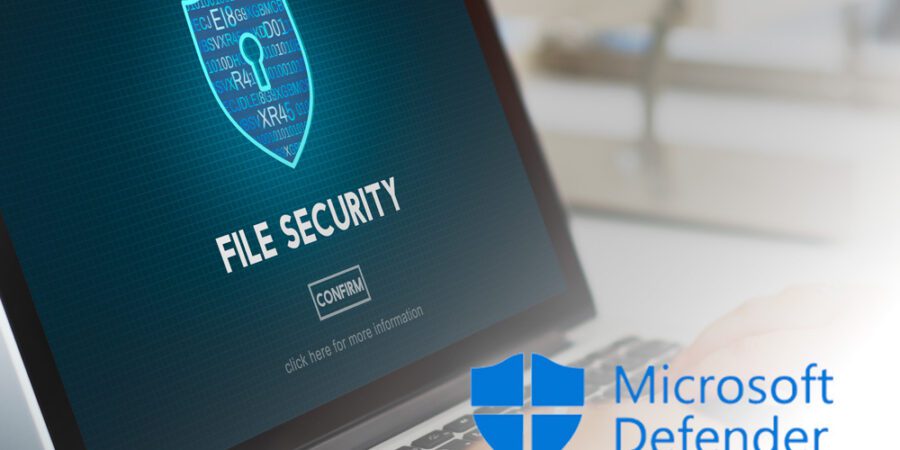Protecting Your Data with Microsoft Defender
Microsoft Defender remains one of the top choices for protecting our systems from a variety of cyber threats. As we rely more on technology, the risk of encountering malware, phishing, and other malicious activities increases. Microsoft Defender offers a comprehensive defence system that guards against these dangers, helping keep our data and devices safe.
One of the major strengths of Microsoft Defender is its integration with Windows, ensuring thorough protection without the need for additional software. This integration allows for seamless updates, making sure our defences stay up-to-date with the latest threat intelligence. By using the power of cloud-based machine learning, Microsoft Defender can quickly identify and neutralise emerging threats, providing real-time protection.
Setting up Microsoft Defender correctly is essential to maximise its effectiveness. This involves configuring various settings to suit our particular needs, ensuring we get optimal protection without unnecessary interruptions. Once set up, the Defender dashboard makes it easy to monitor and manage potential threats, offering clear insights into our security status.
Throughout this article, we will explore the key features of Microsoft Defender, guide you through the optimal setup process, and discuss how to monitor and manage threats effectively. By learning the best practices for using Microsoft Defender, we can ensure that our systems remain secure and efficient, enabling us to focus on our work without worrying about security issues.
Key Features of Microsoft Defender

Microsoft Defender provides a range of features designed to keep our systems safe from various cyber threats. One of its standout features is real-time protection. This continuously monitors our system, detecting and blocking threats such as viruses, malware, and ransomware before they can cause harm. Real-time protection ensures we stay protected without having to run manual scans frequently.
Another key feature is cloud-based protection. Microsoft Defender uses the latest threat intelligence from Microsoft’s vast network to identify new and emerging threats. This cloud integration allows Defender to provide updates faster and improve its detection capabilities. By leveraging cloud power, we benefit from the most current protection available.
Microsoft Defender also includes behaviour monitoring. This feature observes the behaviour of files and apps on our system. If any suspicious activity is detected, such as attempts to modify critical system files, Defender steps in to stop it. Behaviour monitoring adds an extra layer of defence, catching threats that might bypass traditional signature-based detection methods.
Additionally, Microsoft Defender offers controlled folder access. This helps protect our important files from ransomware attacks by preventing unauthorised apps from modifying or accessing them. We can specify which folders are protected and which trusted applications can access those folders, providing customised protection tailored to our needs.
Setting Up Microsoft Defender for Optimal Protection
 Setting up Microsoft Defender correctly is essential for ensuring we get the best protection possible. The first step is to ensure that real-time protection is enabled. This setting is usually on by default, but it’s always good to double-check. Real-time protection allows Defender to scan files as we access them, stopping threats in their tracks.
Setting up Microsoft Defender correctly is essential for ensuring we get the best protection possible. The first step is to ensure that real-time protection is enabled. This setting is usually on by default, but it’s always good to double-check. Real-time protection allows Defender to scan files as we access them, stopping threats in their tracks.
Next, we should enable cloud-delivered protection. This setting allows Defender to use Microsoft’s threat intelligence to provide faster updates and improved threat detection. To turn this on, go to the Defender settings and toggle the switch for cloud-delivered protection. Enabling this feature ensures our systems benefit from the most recent security updates.
Another important setting to configure is controlled folder access. By turning this on, we can protect our important files from ransomware and other threats. To enable controlled folder access, navigate to the “Virus & Threat Protection” settings, select “Manage ransomware protection,” and toggle the switch. Here, we can add the folders we want to protect and the apps we trust.
It is also crucial to schedule regular scans. While real-time protection handles most threats, scheduled scans provide an additional layer of security by checking our entire system on a regular basis. To set this up, go to the “Virus & Threat Protection” settings, choose “Scan options,” and select a schedule that works best for us.
By carefully configuring these settings, we ensure that Microsoft Defender provides optimal protection, keeping our systems secure from the wide array of threats we might face.
Monitoring and Managing Threats with Defender
Monitoring and managing threats with Microsoft Defender is straightforward, thanks to its comprehensive dashboard and intuitive features. The dashboard offers a clear overview of our system’s security status, showing recent scans, detected threats, and any actions taken. By regularly checking the dashboard, we can stay informed about potential security issues and ensure our systems remain protected.
To start, we can view the “Virus & Threat Protection” section, which provides details on recent activities. Here, we can see the results of the latest scans, including any threats that were detected and how they were handled. This allows us to quickly address any issues that arise, ensuring threats are neutralised promptly.
Another valuable tool is the “Threat History” report. This feature logs all the detected threats and the actions taken against them. By reviewing the threat history, we can identify patterns and understand the types of threats targeting our system. This insight helps us take proactive measures, such as updating our security policies or configuring additional protections.
Furthermore, Microsoft Defender sends alerts for any critical threats or actions needed. These alerts appear on the dashboard and can also be sent via email. By responding to these alerts promptly, we can mitigate risks and keep our systems secure. Regularly monitoring these alerts ensures we stay ahead of potential threats and maintain optimal protection.
Best Practices for Using Microsoft Defender

To get the most out of Microsoft Defender, it’s important to follow some best practices. These tips will help ensure our systems remain secure and that we utilise all the features Defender offers effectively.
First, keep the software updated. Regular updates are crucial as they include the latest security patches and threat intelligence. Ensure that automatic updates are enabled, so we don’t miss out on any important enhancements. This keeps our defences robust and capable of countering new threats.
Second, enable real-time protection and cloud-delivered protection. These settings allow Defender to monitor our system continuously and utilise cloud intelligence for faster threat detection. By keeping these features enabled, we get proactive security that adapts to the ever-changing threat landscape.
Third, utilise the controlled folder access feature. This adds an extra layer of protection for our most important files by preventing unauthorised changes. Specify which folders require additional protection and which applications are permitted to access them. This can prevent data loss due to ransomware attacks.
Finally, perform regular scans and review the security dashboard frequently. Scheduled scans and checks ensure that no threats are missed. Regularly reviewing the dashboard helps us stay informed about our system’s security status and take prompt action when needed. These best practices form a routine that strengthens our overall security posture.
Microsoft Defender stands out as a reliable and robust solution for protecting our systems from a wide array of cyber threats. The features and tools it offers make it easy to set up, monitor, and manage our security effectively. By understanding and utilising its key features, configuring settings for optimal protection, and following best practices, we can ensure our systems remain secure.
The real-time protection, cloud integration, and behaviour monitoring are powerful tools that work together to safeguard our data. Setting up controlled folder access and scheduling regular scans adds additional layers of security, bolstering our defences. Consistently monitoring the security dashboard and responding to alerts keeps us informed and proactive.
For those of us looking to enhance our security measures and get the most out of Microsoft Defender, guidance and support are always valuable. At Influential Software Services, we specialise in helping organisations maximise their use of Microsoft software. Get in touch with us to learn how we can assist in securing your systems and ensuring your data stays safe. Contact us today for expert advice and tailored Microsoft solutions.


